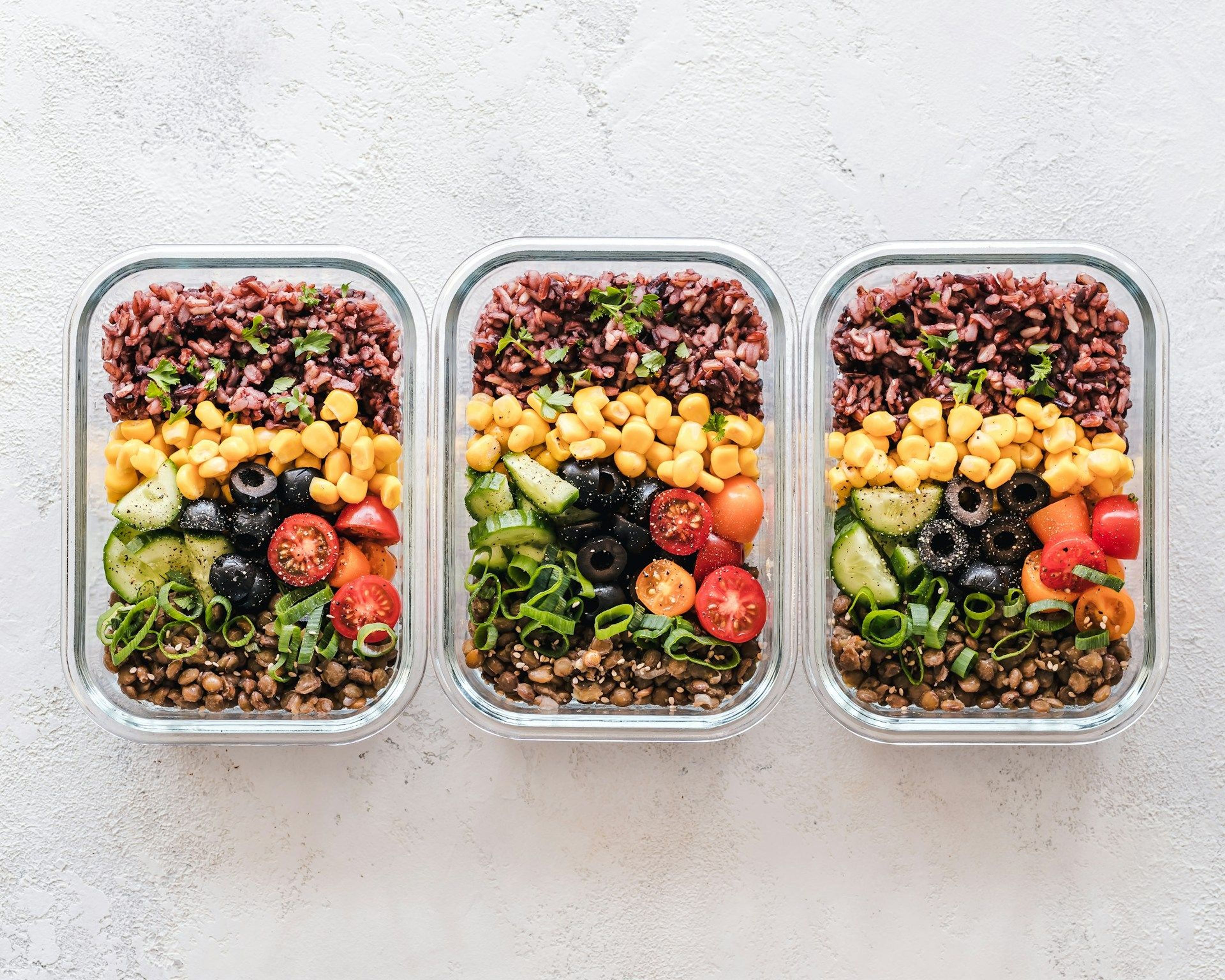Ever felt like your weeknights are a chaotic scramble to figure out dinner? You're not alone. The daily pressure of deciding what to eat, shopping for ingredients, and cooking from scratch can be exhausting. But what if you could reclaim that time and energy? That’s the promise of meal prepping - a simple, powerful strategy to prepare meals or ingredients in advance, transforming your week from stressful to streamlined.
Meal prepping is more than just a time-saver; it’s a revolutionary act of self-care. It’s the secret to ditching decision fatigue, taking firm control of your nutrition, and saving money - all without sacrificing your entire weekend. This guide will walk you through everything you need to know, from building your first simple plan to mastering storage, making "meal prepping for beginners" an easy and sustainable part of your life.
Why Meal Prepping Is a Game Changer for Busy People
When meals are set up ahead of time, you free up mental bandwidth and avoid last-minute takeout. You’ll also control ingredients, hit nutrition goals, and spend less overall.
- Fewer decisions: A plan beats “what’s for dinner?” at 7 pm.
- Consistent nutrition: Prepped meals support steady energy and better choices.
- Time back: Handle cooking once, enjoy easier weeknights.
- Less waste: Buy exactly what you’ll use and actually use it.
- Budget-friendly: Batch cooking stretches ingredients and cuts impulse buys.
Building Your First Simple Meal Plan
One common mistake beginners make is attempting to plan seven unique, gourmet meals for the entire week. This approach often leads to burnout. The key to successful meal prep is to begin with small, straightforward steps.
Forget the fancy, complicated recipes for now. Your first goal is to build a manageable plan that removes the daily "what's for dinner?" guesswork, not one that adds a new layer of stress. That might mean focusing on just your work lunches for the week, or maybe just a couple of dinners. That's it. Success in meal prepping for beginners is about creating small, consistent wins.
Find a Prep Style That Fits Your Life
Pick one approach (or a hybrid) that matches your schedule and preferences.
- Batch cooking: Make big batches of proteins, grains, and veggies, then mix-and-match all week. Great for variety and flexibility.
- Assembled meals: Pack full grab-and-go meals. Perfect for commuting or when you want zero decisions at lunchtime.
Start With Two Easy Recipes
Keep it remarkably simple for week one: one protein you like and one versatile carb or veggie side. You’ll get repetition without boredom.
- Choose a protein you already enjoy, like lemon herb chicken breast.
- Choose a side that takes seasonings well, like roasted sweet potatoes and broccoli.
- Cook both in larger quantities. Use sauces, dressings, or herbs to change the vibe day to day.
When you combine this level of planning with a consistent fitness routine, you start seeing real results. You can learn more about how to start working out to build a complete wellness system.
By focusing on versatile "building block" ingredients, you prevent flavor fatigue. The same chicken and veggies can become a salad, a grain bowl, or a wrap with simple tweaks.
A Simple 3-Day Lunch Blueprint
Use this template to make your first week feel easy. Rotate sauces and add-ons to keep flavors fresh.
| Meal Component | What to Prep (Sunday) | Monday Lunch | Tuesday Lunch | Wednesday Lunch |
|---|---|---|---|---|
Protein | 4 grilled chicken breasts | Sliced chicken with sweet potatoes & broccoli | Diced chicken in a big salad with vinaigrette | Chicken wrap with hummus and spinach |
Complex carb | 2 cups cooked quinoa | Serve with chicken and veggies | Skip for a lighter salad | Add 1/2 cup quinoa to the wrap |
Veggies | Roasted sweet potatoes & broccoli | Hearty portion of both | Toss broccoli into the salad | Enjoy sweet potatoes on the side |
A few smart building blocks go a long way. You’ll spend less, waste less, and actually eat what you planned.
Start Small, Win Big
Pick one protein and one side, cook once, then change the flavors with sauces and herbs. This is the easiest on-ramp to sustainable meal prep.
Your Smart Shopping and Kitchen Essentials
Successful meal prepping doesn't require fancy kitchen gadgets; it's about having a smart strategy. The key is to create an organized and efficient workspace that makes cooking feel smooth rather than stressful.
The process begins at the grocery store. An organized shopping list is crucial to avoid impulse buys and food waste. A useful tip is to arrange your list to match the store's layout by grouping items like produce, proteins, pantry staples, and frozen goods. This approach turns a long, wandering chore into a focused 20-minute task.
Master Your Grocery Game
To make your shopping trips even smarter, start thinking in terms of versatile staples. Buying things like quinoa, brown rice, oats, and canned beans in larger quantities is a great move. They have a long shelf life and can be the foundation for countless different meals, saving you money in the long run.
When it comes to fresh produce, however, it's best to stick to your plan. Only buy what you know you'll use for the week's recipes. This is the single best way to cut down on food waste.
For your main proteins, think about what cooks well in big batches. Chicken breasts, ground turkey, and lean beef are fantastic, versatile choices. And if you're looking to add an extra boost to your meals or smoothies, getting familiar with the different types of protein powder can be incredibly helpful.
The Only Tools You Really Need
Skip the gadget avalanche. A small set of workhorses covers 90% of meal prep.
- Quality Airtight Containers: This is a non-negotiable. Invest in a good set of glass or BPA-free plastic containers. They keep food fresh, and getting a matching, stackable set will save you a world of frustration when organizing the fridge.
- A Good Chef's Knife: One sharp, 8-inch chef's knife can handle 90% of your chopping and dicing. It’s far safer and more efficient than a drawer full of dull, cheap knives.
- Large Baking Sheets: Have at least two on hand. Sheet pans are the undisputed workhorse of meal prep, perfect for roasting huge batches of veggies, chicken, or fish all at once.
- A Large Pot and Skillet: A stockpot for cooking grains and a big non-stick skillet for sautéing proteins and veggies are all you really need for the stovetop.
- Cutting Boards: Keep at least two separate boards - one strictly for raw meats and another for produce. This is a simple but critical step to prevent cross-contamination.
A tidy, minimalist setup beats a cluttered kitchen every time.
Storing Your Food So It Actually Lasts
Your fridge is organized, but the key to maintaining fresh and delicious food all week is proper storage. Many beginners make mistakes here, but it's straightforward once you understand the basics. Crucially, ensure cooked food cools completely before sealing and refrigerating it; trapping steam encourages bacterial growth. For quick cooling, spread hot food on a baking sheet.
Safety and Freshness Basics
Follow these guardrails and your food will hold up beautifully.
- Cool before sealing: Let hot food reach room temp before lidding to avoid trapped steam and sogginess.
- Fridge window: Most cooked proteins, grains, and roasted veggies last 3-4 days.
- Seafood: Eat within 2 days for best texture and safety.
- Freezer strategy: If you’re prepping for 5-7 days, freeze later-week portions right after cooling.
- Food safety note: Keep food out of the 40°F to 140°F (4°C to 60°C) danger zone; cool quickly and store promptly.
Glass vs Plastic: Which Containers to Choose?
Both can work. Use this quick comparison to pick what fits your lifestyle.
| Option | Pros | Cons |
|---|---|---|
Glass | Durable, resists stains/odors, oven-safe | Heavier, higher upfront cost |
BPA-free plastic | Lightweight, budget-friendly, great for commuting | Can stain/retain odors, not oven-safe |
Whichever you choose, airtight and leak-proof lids matter most. Matching sets also make your fridge look and feel organized.
Little Tricks for Mid-Week Freshness
Small habits can significantly improve your meal's taste by day four, avoiding soggy lunches.
- Keep Sauces Separate: Don't dress salads or pour sauces until you're ready to eat. Use small containers for dressings and sauces.
- Separate Crunchy Items: Pack crunchy ingredients like nuts or croutons separately to maintain texture until mealtime.
- Add Delicate Greens Later: Add fresh herbs and tender greens just before eating to prevent them from becoming slimy.
Quick Answers to Common Questions
Won’t I get bored eating the same thing?
Not if you prep building blocks instead of identical meals. Cook a flexible protein, a grain, and a veg, then rotate sauces and toppings: salsa and avocado one day, soy-ginger and sesame seeds the next, pesto and tomatoes after that. Same base, new experience.
How long does prepped food last?
Most cooked items keep 3-4 days in the fridge if cooled before sealing and stored in airtight containers. For anything beyond that, freeze portions right after they cool. Plan to eat seafood within 2 days for best quality.
What containers are best?
Pick based on how you live. If you reheat in the oven or want long-term durability, choose glass. If you commute a lot and need something light and affordable, BPA-free plastic is great. Either way, prioritize airtight lids and a matching, stackable set.

